Today we are conducting a benchmark of the Cocktail Audio X12, a musical server and CD/Ripper player equipped with a hard drive (also marketed under the name Nova Fidelity X12). The device contains network access, which enables you to stream Internet radio and various on-line services including the Qobuz application, which we are thrilled about.
The X12 can also read high-definition audio files (24-bit at up to 192kHz) on a computer, any NAS server connected to the Ethernet network, or via the USB A plug on its frame.
The device was designed by Korean company Novatron, which also designed the X10, a simplified version of the X12 without a scroll wheel and USB socket on the frame. The whole X40 system is compatible with digital audio files in DXD (353 and 384kHz as sampling frequencies) and DSD. With the Qobuz application already integrated on these devices, they are perfect for Hi-Fi listening.
We will now explore the ins and outs of the X12.
About the Cocktail Audio X12
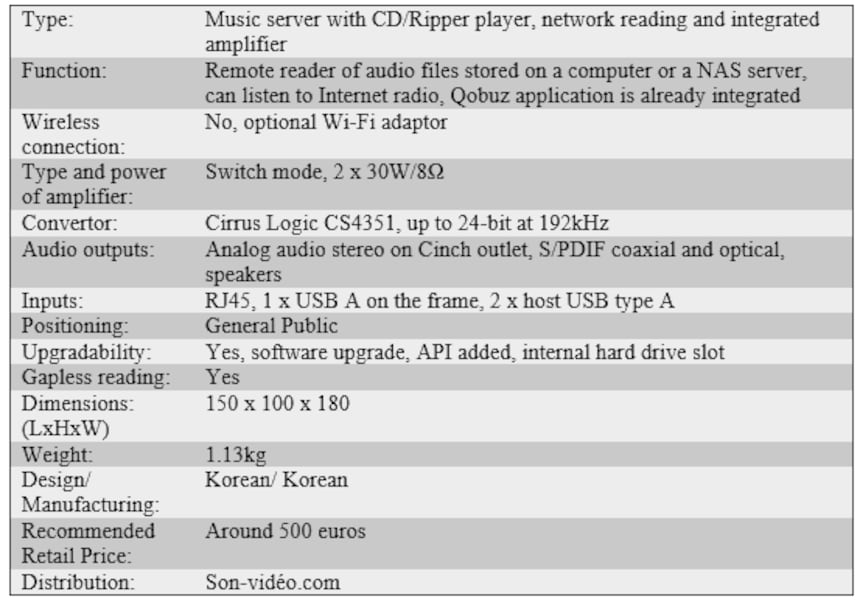
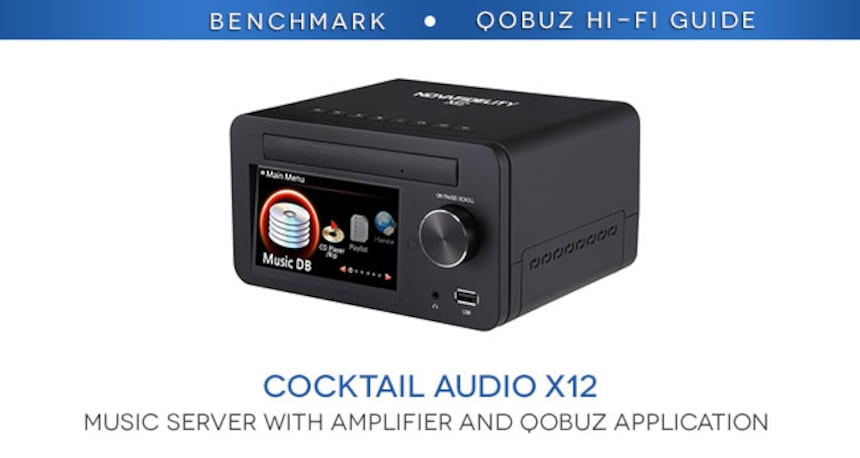
Presentation
The Cocktail Audio X12 has a compact and functional appearance, which admittedly could be easier on the eye. However, it boasts an impressive screen size (4.3"), enabling you to easily read the information from a reasonable distance. You can navigate using the dial situated on the right, and even control the numerous functions of the device using its comprehensive remote control.
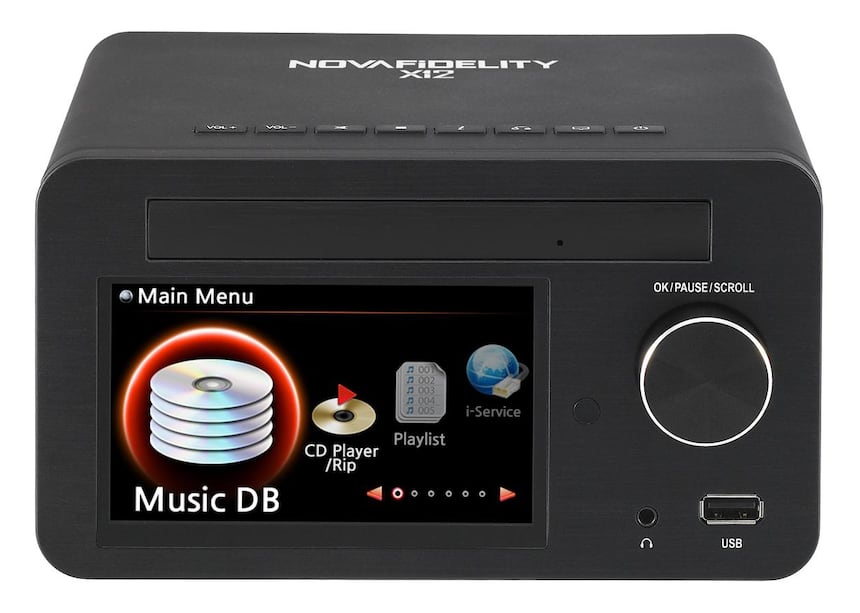
There is a headphone socket with a standard 3.5mm Jack next to the USB A socket, where you can connect an USB key, and access its content using the ?browser? option. The top section is dedicated to the CD player drawer. It is computerized, meaning it only opens partly when it ejects the CD.
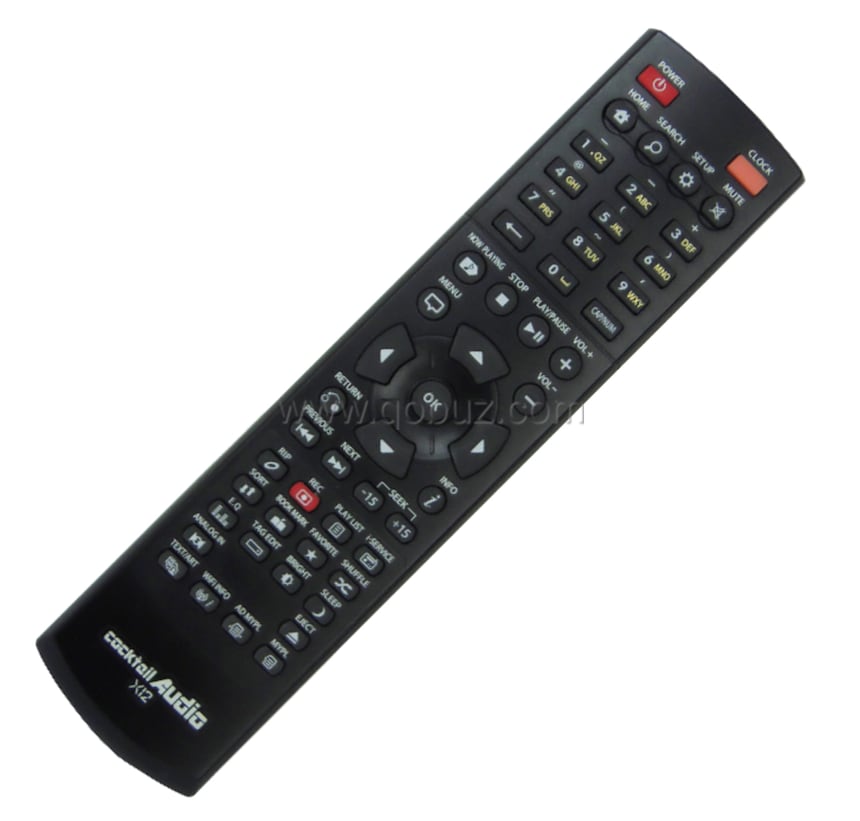
There is a compartment on the frame?s side that accepts the traditional hard drive of 3.5" or 2.5" or even a SSD type.
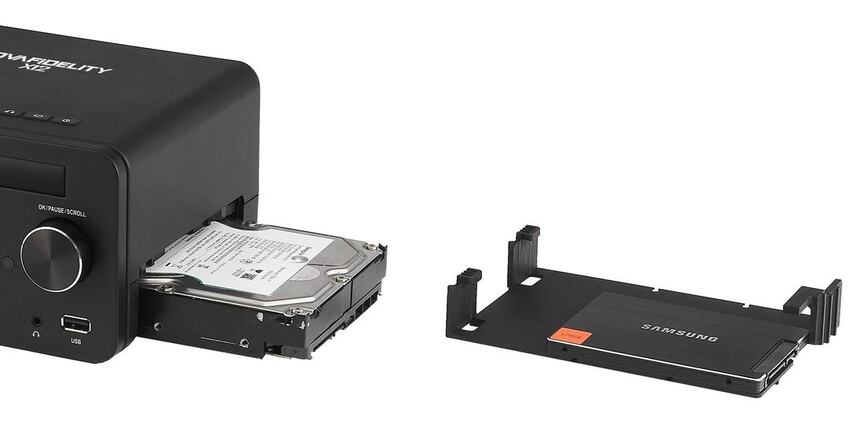
Connectivity
The X12 music serve has network access on a RJ45 socket, next to the analog stereo input. On its side there two digital S/PDIF outputs, optical and coaxial, which can be attached to an external DAC and an analog stereo output at a variable level.
A relatively small heat sink ensures the evaporation of heat generated by the switched amplifier, which offers a very good yield.
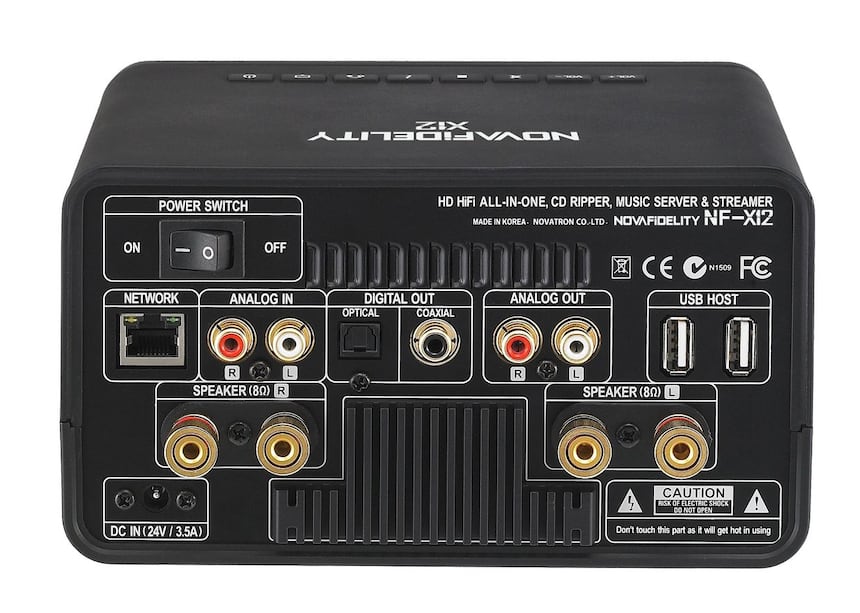
You can use the USB A sockets to connect the optional Wi-Fi dongle that provides the internet connection and streaming in its wireless mode. The speakers? connectors accept banana files or stripped files.
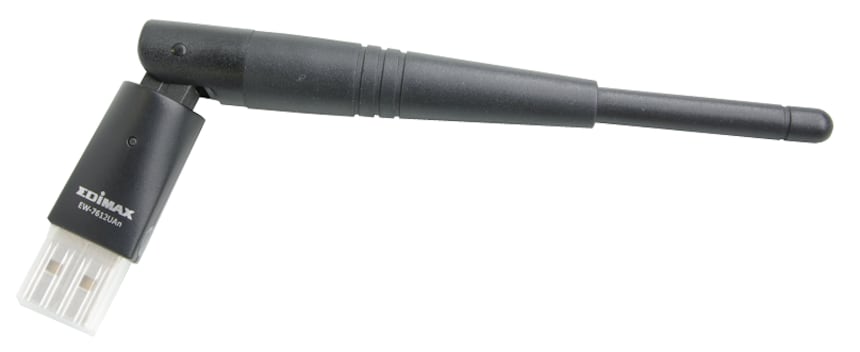
Manufacturing
The Cocktail Audio X12?s manufacturing leaves nothing to be desired. Its interior is well organized and tidy, as shown by the photo underneath. Here you can see the connection from the main card to the CD player, and the hard drive with SATA cables.
You can also see the heat conductor that ensuring the heat transfer between the amplifiers located on the card and the heat sink found on the back face.
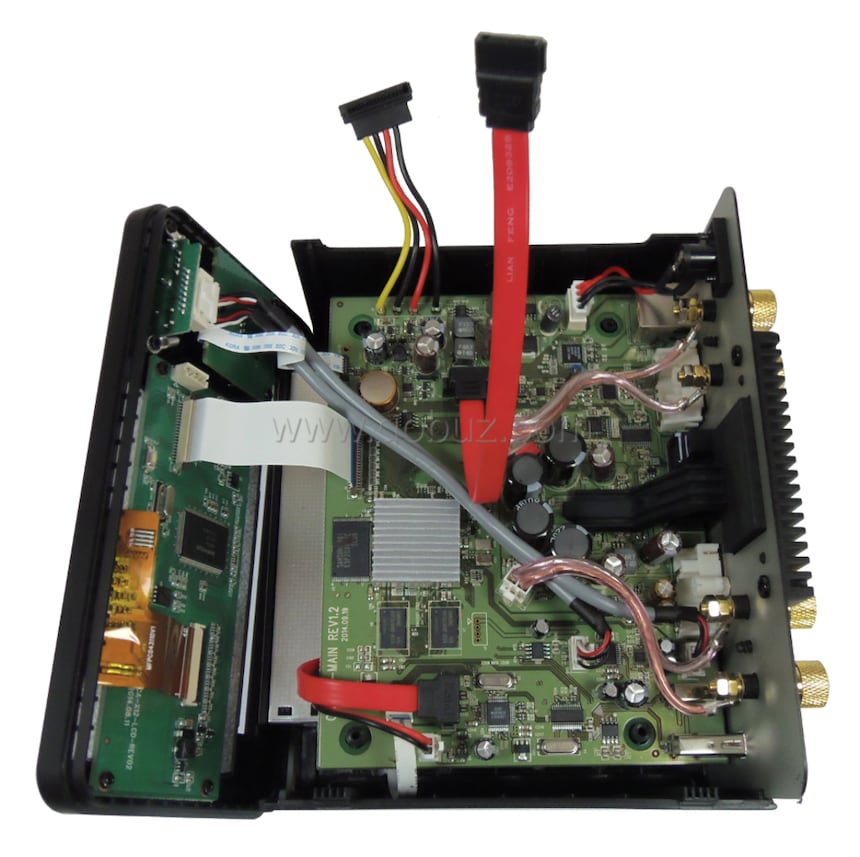
The cards benefit are meticulously designed, demonstrated by this image of the main card.
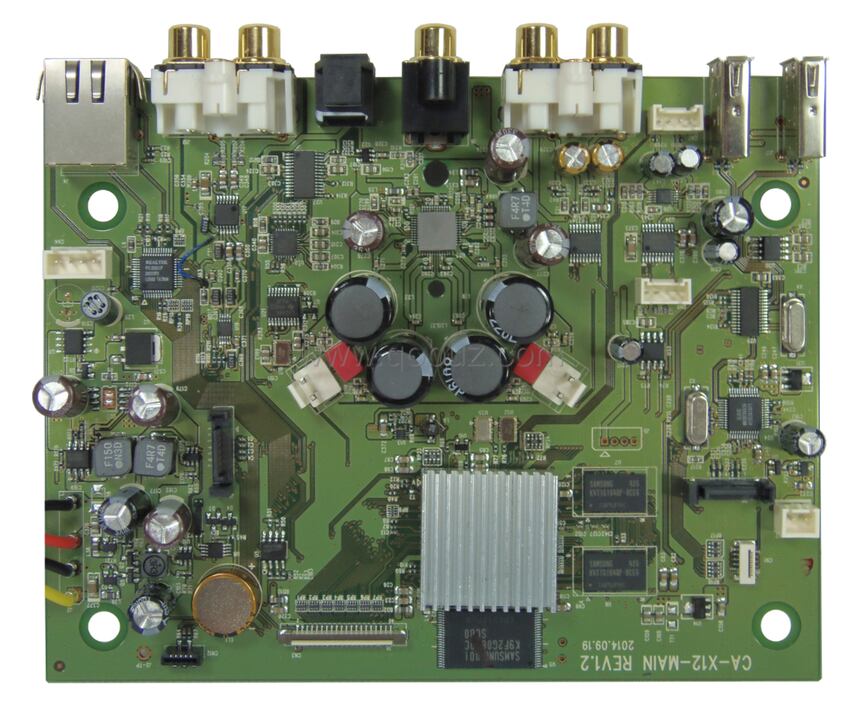
The power feed is a DC-DC convertor Richtek RT7272, associated to a Mosfet Siliconix Si4447A transistor, a regulator of the type 7805 in a surface mounting casing. There is also a very high value condenser (220.000 ?F/5,5V), which is used to store information in the memory (at the top on the right).
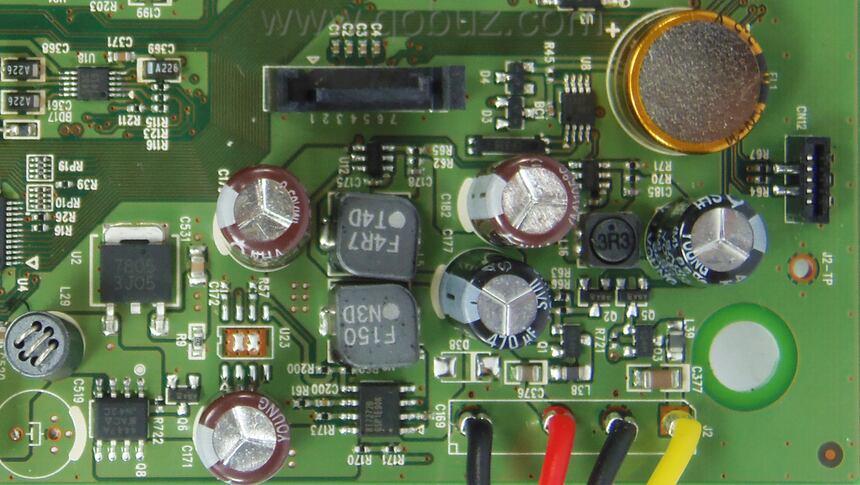
The network interface is produced by a Realtek RTL8201 chip. The Cirrus Logic transmitting circuit CS8406 transforms the internal digital signals that originate from the network or other sources, such as the CD, analog outputs or USB socket, into available S/PDIF signals on the coaxial and optical outputs.
The CS8406 transmitter is preceded by a Cirrus Logic CS8422 conversion sampling rate circuit. This converts all the digital audio signals into signals of 24-bit at 192kHz. It appears that these signals are only intended for the switch amplifier.
There is also an electric volume adjuster on the analog stereo input: the NJM72341 by JRC (New Japan Radio Company). The sound is then digitalised at 24-bit at 96kHz by a Cirrus Logic CS5343 chip.
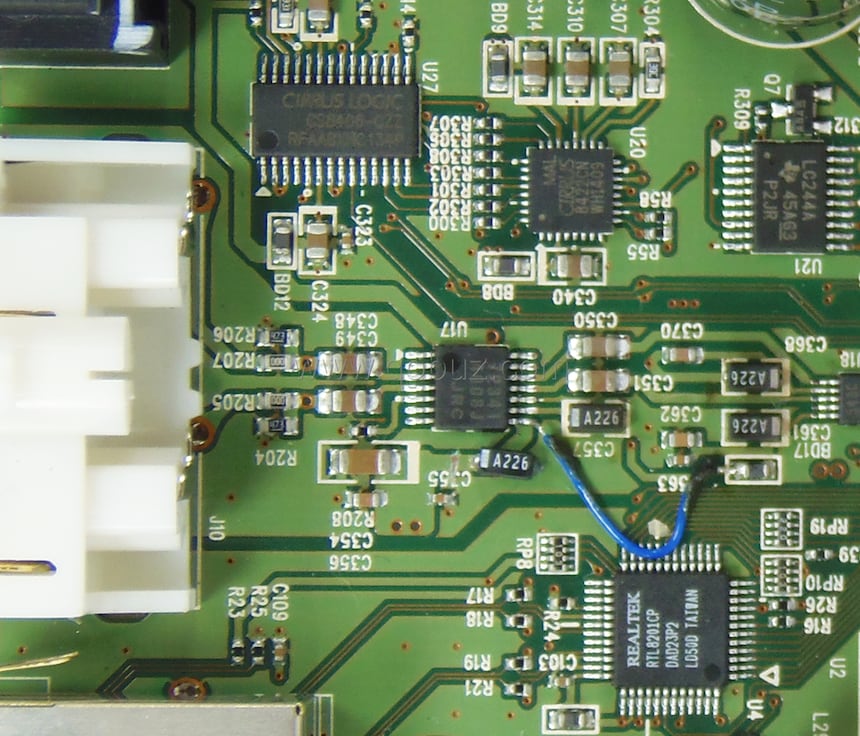
The photo below displays the heat sink, under which resides the chip that treats the signals coming from the internet. On the far left you can see the Pic12F375 Microchip, a micro-controller that manages the electronics.
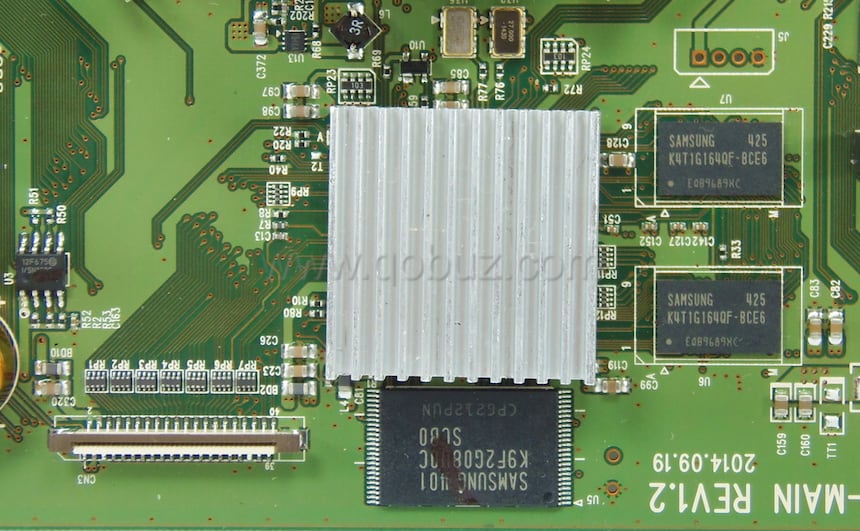
The USB A inputs are managed by a Terminus FE1.1s circuit (Hub USB 2.0 High Speed at four inputs), next to which you find the SATA USB Genesys Logic GL830 bridge.

The Cirrus Logic CS4351 chip (24-bit at 192 kHz) ensures the digital analog conversion, intended for the line stereo output. The CS4351 integrates its own filters with a switched capacitate, and does not require additional filtration for the operational amplifier. Its outputs are connected to Cinch sockets through a simple passive filter. The Fine Gold continuous blocking capacitates are highly esteemed amongst audiophiles.
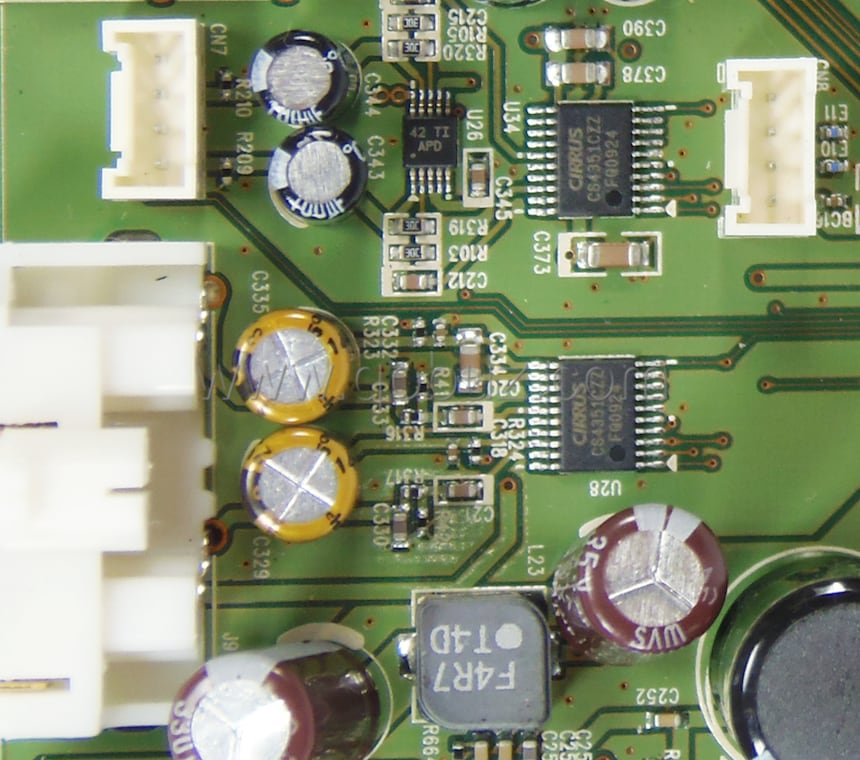
There is also a second digital analog conversion chip CS4351 (at the top of the photo), which is exclusively dedicated to the amplifier for headphones, (a Texas Instruments TPA6112A2 model).
The power amplifier for speakers is a TAS5715 Texas Instruments switching model. This can deliver a power of 25W per channel under 8? of charge with a power feed of 18V.
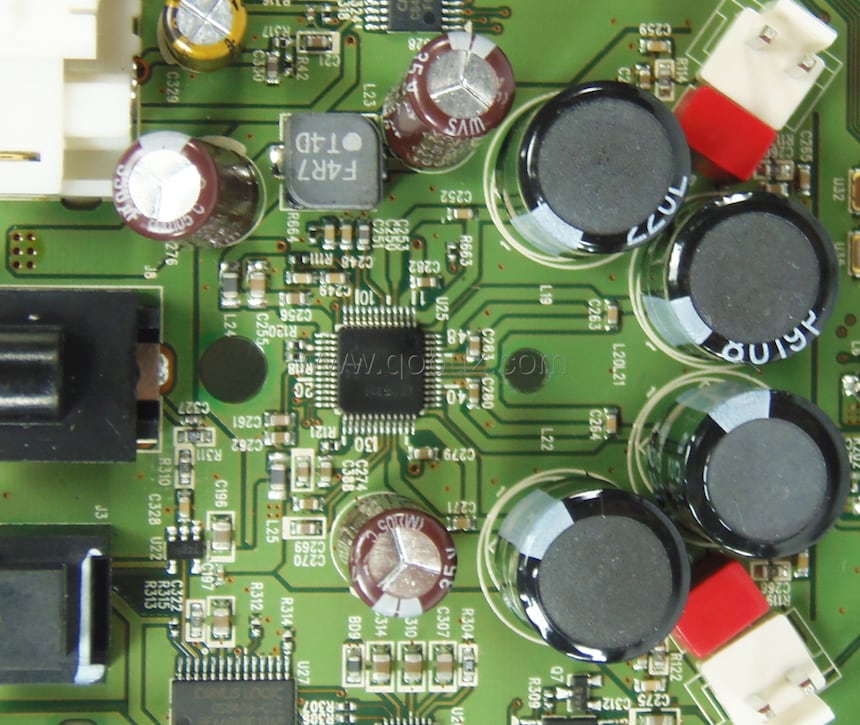
Usage, listening
The graphic interface of the X12 is efficient and straightforward, doing the job without getting lost in frilly decorations. Although the device comes across minor problems when using the Qobuz application, the manufacturer is correcting them as we speak.
Although the device?s sound quality is indisputably good, it isn?t perfect.
When streaming off Qobuz, Dvorak?s Symphony N°8 with Claus Peter Flor directing the Philharmonic Orchestra of Malaysia does not shine with the same intensity that it does with more evolved amplifiers. However, the X12 still does a fantastic job, and if you tease the volume, the sound restitution is open, rich and dynamic.
It also works well when listening to the Pink Floyd?s latest album, The Endless River. The sound floats with the same ?psychedelic? tones that made the group successful; a fantastic listening experience.
Leaving the equaliser on ?normal?, the restitution of Georgio by Moroder from the album Random Access Memories by Daft Punk (in its Studio Quality version of 24-bit at 88kHz) is clean, although it lacks confidence in the base. To make the most of the track, you have to put the equaliser on ?Rock?.
However you will note that these corrections do not concern the analog audio stereo output, as the sound is always remains the same when you attach the device to a NuForce STA 100 switched amplified stereo power block. It creates a good quality sound, whatever the equalisation. When we listened to My Sweet Lord from the album Let It Roll by George Harrison, we appreciated the good general balance and the guitar?s impressive sharpness.
In the Introduzione al Dixit RV 635: III Sternite, Angeli, from the album of Vivaldi?s Gloria-Dixit Dominus, interpreted by the Concerto Italiano led by Rinaldo Alessandrini, the X12 and its amplification procure a pleasant sound restitution, balanced and with open chords.
To conclude, the musical server Cocktail Audio X12 is a benefits from a serious design and electronic manufacturing, offering impressive sound results, which enable you to play audio files in High Definition, and to play music via the Qobuz application in CD quality.
X12 on the Cocktail Audio web site
Reading capabilities
Cocktail Audio X12
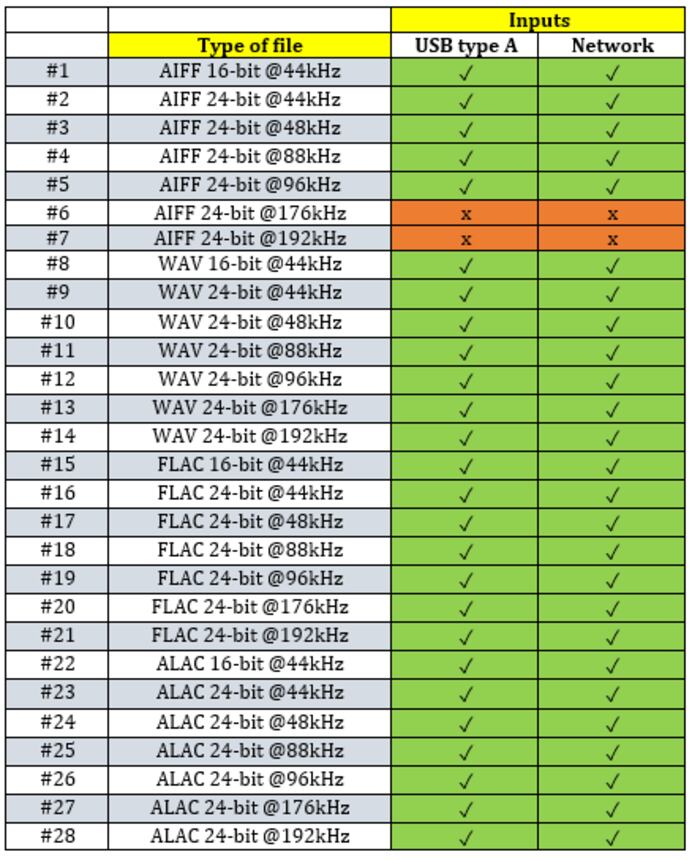
If you are a manufacturer, importer, distributor or actor in the domain of sound reproduction and you wish to contact us, please do so using the following address: newstech@qobuz.com
If you are passionate about our Hi-Fi Guide and you wish to contact us, please do so using the following address: rubriquehifi@qobuz.com


